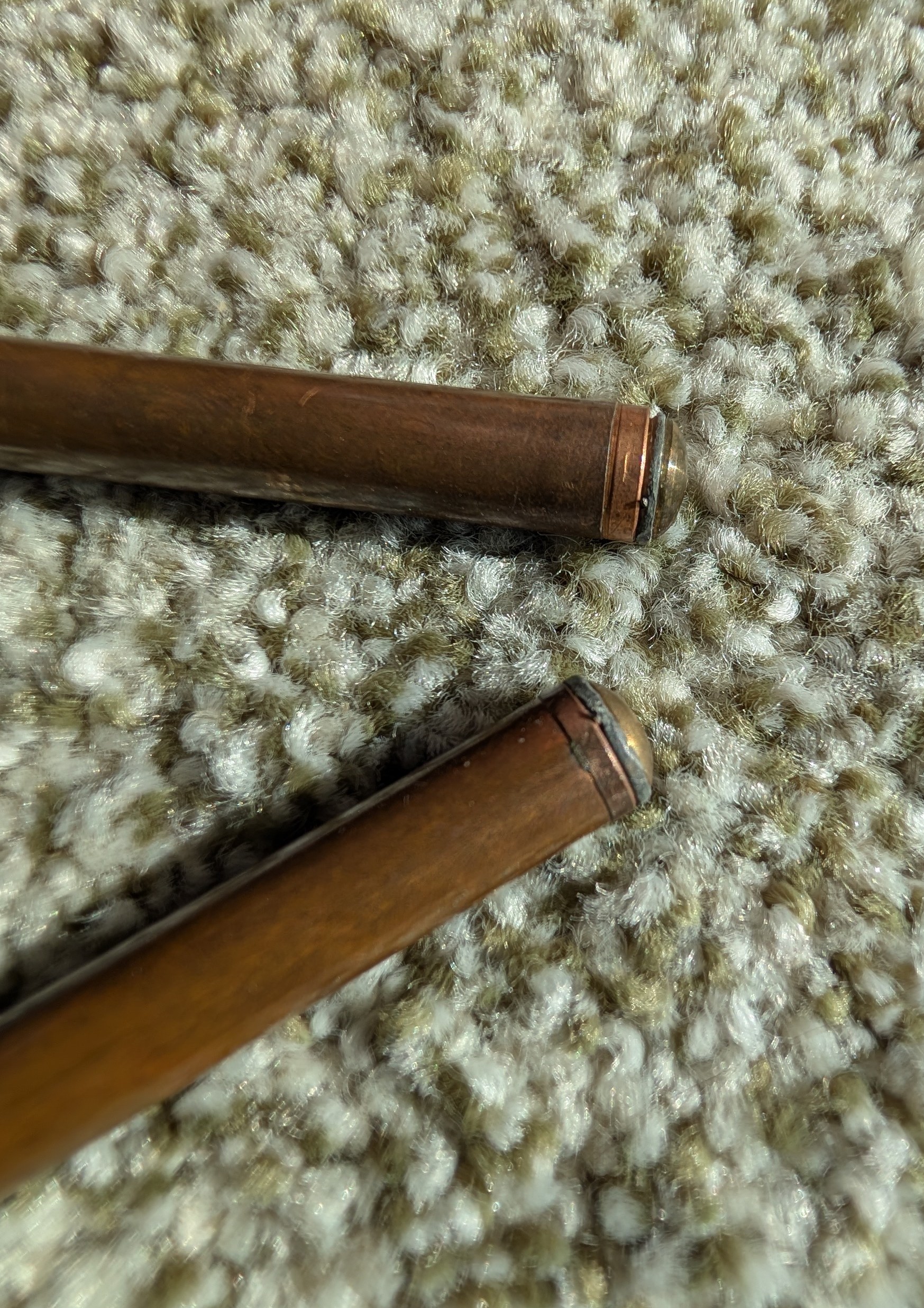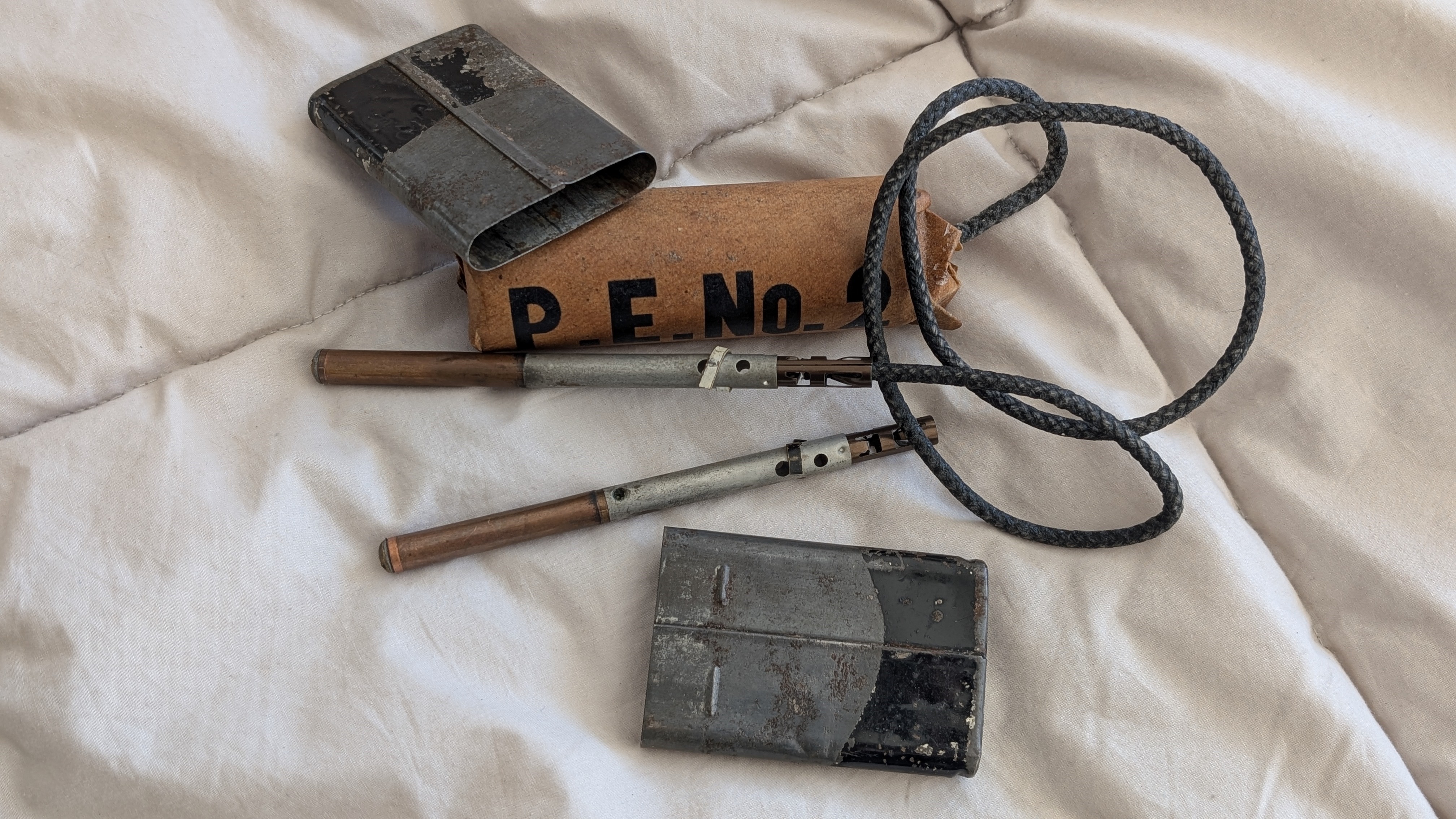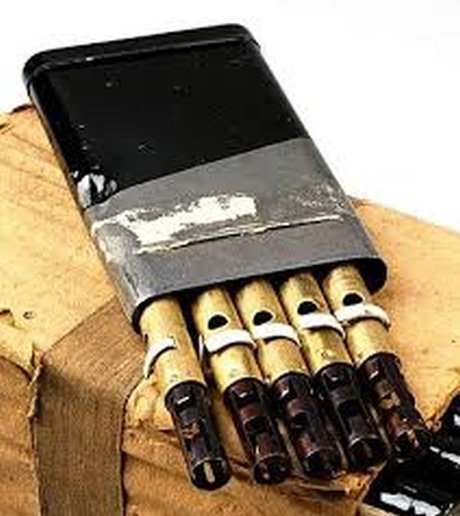Switch Number 10 – Time Pencil.
A time delay switch operating on the principle that a certain strength of acid will eat through a fixed diameter copper wire within a certain time at a certain temperature. The corrosion of the wire inside the ‘pencil’ caused a spring retained striker pin to set of a percussion cap and activate the explosives connected to it. These were not as accurate as an L Delay but as they are extremely common to find it is likely that they were still fit for purpose within limits. They were supplied with a colour-coded tag that showed the number of hours delay they would provide. They also came with a temperature chart to indicate the tolerance to be prepared for. In extreme cold they would take longer to operate, and in extreme heat would work quicker.
This detailed picture shows the snipped ends of the wire that holds back the striker against the spring. The assembler would put the thing together with wire running through a tiny hole in a fitting in the centre of the switch, past the glass ampoule, and through a tiny hole in the end fitting which is next to a threaded hole for the retaining screw. She would pull the wire and striker back, then bend the wire 90 degrees and run the screw with lead washer down on it. Then snip the wire off.
Important to say these chemical delay switches had ampoules filled with cupric (copper) chloride, which acted like acid on the iron in the steel wire, causing it to break due to the striker spring tension on it. The strength of the solution was varied to get different delays. Often writers and veterans said it was the wire size that was varied. Not true.
A time pencil that was waterproof and with timings that were more exact was needed. The No. 9 "Lead Delay" switch was invented. These were also affected by temperature. Warm meant it activated sooner, cold meant later.
John K. Neuenburg


